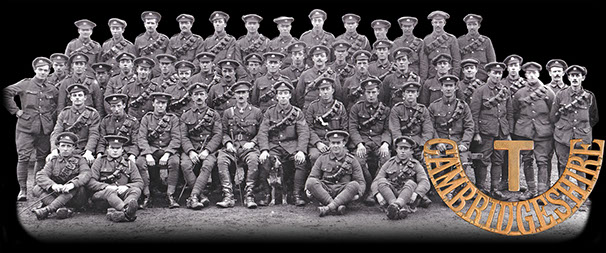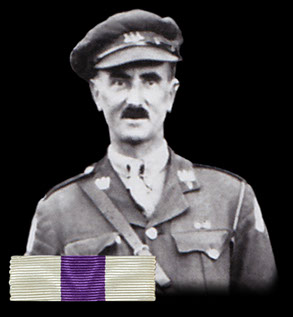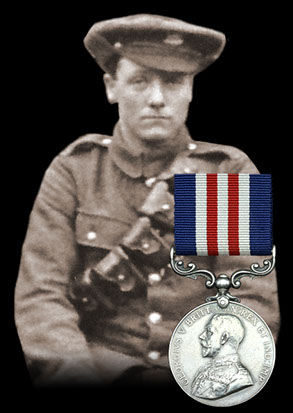The Transport Section at the Second Battle of Ypres, April - May 1915.
For the infantryman in the trenches, one of the most important aspects of daily life was getting a regular supply of hot food. It was a job that fell to the Transport Section, which was required to deliver the meals on wagons to a rendezvous point, from where they were carried into the front line by ration parties. It was dangerous work, none more so than during the 2nd Battle of Ypres.

The Transport Section of the 1/1st Battalion, The Cambridgeshire Regiment in late 1915.
Commanding the 1/1st Cambridgeshire Regiment’s Transport Section was 2nd Lt Francis Meban Platt-Higgins. Born in 1874, in Ireland, he attended Rossall School, at Thornton, Lancashire, and entered Trinity College, Cambridge, in June 1893, where he gained a BA in 1896. He married Ethel Dorothy Humphrey in 1899 in Cambridge and in 1901 was living at Little Laver Hall, Little Laver, Essex, with his wife and four sons. By 1911, the family were living in Little Shelford.
Platt-Higgins was commissioned as Quartermaster & Hon Lt on October 8, 1914, but resigned his commission as Hon Lt on January 23, 1915 in order to accept a commission as 2nd Lt in 1/1st Cambridgeshire Regiment the following day. Appointed as the 1/1st Battalion's Transport Officer, he went overseas with the battalion on February 14, 1915.
The work of the Transport Section is praised in “The Cambridgeshires 1914-19, Riddell and Clayton”. In Chapter IV, The First Time at Ypres, 17 March – 26 May 1915, Clayton writes:
The transport, however, were having a hectic time. Night after night Platt-Higgins came riding up with his limbers, and although the bottle-neck outside Ypres was systematically shelled, as was the Menin Road, they always managed to squeak through.
After the German gas attack of April 22, Clayton wrote:
Archer informed us that the reason our rations had not arrived was because the enemy had penetrated to within a thousand yards of Ypres; then for no apparent reason they hesitated and the Lahore Divisions arrived in the nick of time. We knew that Platt-Higgins would have got through if it had been possible; that night and the night of 26 March, 1918, were the only two in the war that our transport failed to do so.
Later in the book, Riddell describes Platt-Higgins as the best of transport officers.
Letters sent home by members of the Transport Section paint a vivid picture of their experiences and life at the front. Driver Jarvis Guy, of Benwick, wrote in April 1915:
We are a complete party of men, thoroughly equipped in every way, with shoeing smiths, a saddler, and a wheelwright. Our work out here is chiefly to convey the food to the men in the trenches. Most of it is done at night and it is rather a difficult job, especially if dark, as the German snipers are hot stuff. So far we have lost neither men nor horses from their devilish work, and I hope that we shall continue to be as fortunate in future. We have an excellent officer in command of us, who thoroughly understands horses, and that is the chief thing with us, keeping them fit and well.
Another of the section, Driver James Alfred Edwards, also from Benwick, suffered a bad shrapnel wound in the thigh on May 5, 1915. He was evacuated to England and sent to hospital in Stafford. He wrote home while recovering:
When it got too dangerous for the limbers, all food etc. had to be taken up on pack horses. The night I got hit was awful. I suppose getting hit made it a lot worse.
We had to take our horses up a railway line after we got through Ypres and all the way up the shells were bursting very close to us. However we got up quite safely and were coming down the railway, feeling pretty safe, when a shell burst right over us, a nice piece bobbed through my right thigh, making a hole a rat could crawl through, and three more got hit as well. No-one was killed, although our officer had to shoot one of the horses which got hit in the leg and could not walk. I managed to get under cover of a house and there an officer of the RAMC put a dressing on. Then two fellows carried me on a stretcher to a dressing station.
On the way I think I had a most marvellous escape. Another shell burst right over the top of us, and a piece went through the stretcher at my side. I think that was the most awful moment in my life.
The work of the section during 2nd Ypres earned Mentions in Despatches for Platt-Higgins (promoted Temporary Lieutenant on June 14, 1915) and three of his men. The MIDs were announced in the Supplement to the London Gazette dated January 1, 1916, and relate to Sir John French’s Despatch of October 15, 1915.
The Transport Section men honoured with him were No. 1141 Pte George Allen, of Grantchester, No. 1253 Pte Percy Painter, of Sutton, and No. 1163 Cpl William Jennings, of Stapleford.
At the end of December 1915, the Military Cross was instituted by Royal Warrant as an award for junior officers. As a result Platt-Higgins was one of the early recipients of the MC for his work at 2nd Ypres (announced in the London Gazette January 14, 1916, without citation).
In March 1916, the Military Medal for NCOs and men was instituted by Royal Warrant and Allen, Jennings and Painter were all given retrospective awards in the London Gazette dated October 11, 1916.
Platt-Higgins was promoted Temporary Captain on September 17, 1916 and served with the battalion until leaving to become a Remount Officer with the Army Service Corps in October 1917, serving at the depots at both Rouen and Dunkirk. He died in 1942 and is buried at Cuckfield, Sussex.
Jennings was killed in action on September 23, 1918, and is buried at Epehy Wood Farm Cemetery, France. Allen was later transferred to the railway section of the Royal Engineers and Painter was discharged on September 28, 1916, due to wounds.

Capt Platt-Higgins MC in 1917.

Cpl Jennings MM in mid 1915.

Pte Painter MM in late 1915.

This site went live on the 14th February 2015 to mark 100 years since the 1/1st Cambs went off to war.
WE WILL REMEMBER THEM
Email us: cambsregt@gmail.com
Copyright 2015, 2016, 2017, 2018, 2019 by Felix Jackson. The information and images on this site should not be reproduced without prior permission.